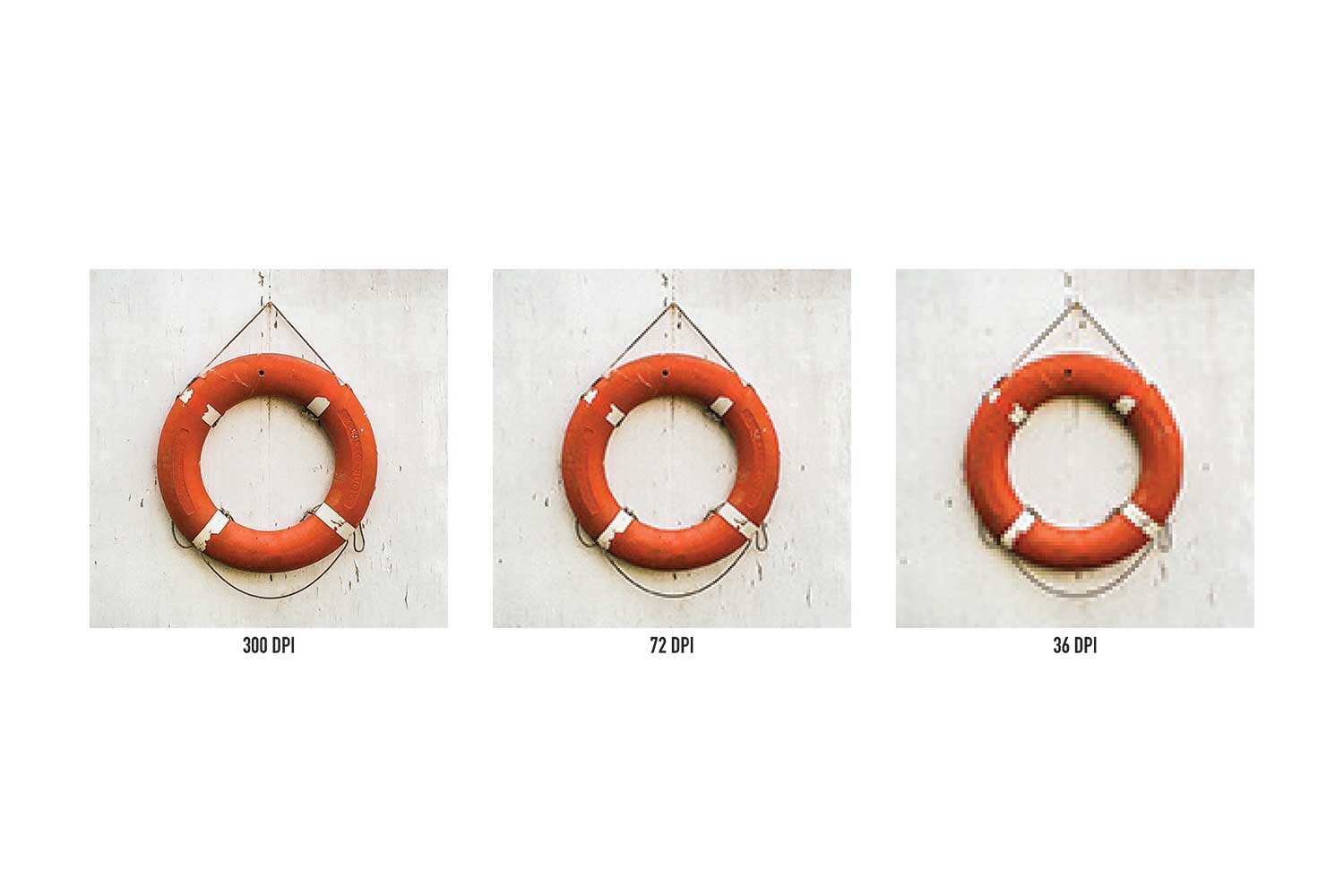Image Resolution
A screen display is made up of pixels of light and a printed piece is made up of dots of ink. This is where the terms DPI (dots per inch) and PPI (pixels per inch) come from. Dots refer to print and pixels to a digital display, DPI and PPI are both ways to describe resolution. DPI refers to the physical dots of ink per inch on a printed or scanned image. Printers do not display color in pixels, but rather in layered dots consisting of cyan, magenta, yellow, and black (CMYK).
Image resolution has everything to do with printing your image. It has nothing to do with how your image appears on your computer screen. Optimum image resolution for a print file is 300 PPI at the final size. Quite often larger prints that are being viewed from a distance don't require as high a resolution and are generally acceptable at 150 PPI or less.
For example, imagine a one-inch by one-inch image, with a resolution of 100 PPI. Increasing the size of this image to ten-inch by ten-inch will decrease the PPI to 10. If you go on to use the image at that size, there will only be ten pixels per inch and it will appear pixellated and have jagged edges. The general rule is that you can make an image smaller without having any major issues, but you will encounter problems when making it larger.
Without getting too technical a simple way to preview resolution is to save or export as a PDF and view the PDF at actual size on screen.

